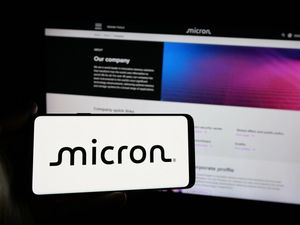Financial News
Orchestra BioMed Presents New Data Showing Sustained Clinically Meaningful Reduction in 24-Hour Ambulatory Systolic Blood Pressure in Hypertensive Pacemaker Patients Treated with AVIM Therapy for Over 3 Years
- 8.9 mmHg mean reduction in 24-Hour ambulatory systolic blood pressure at average of 3.6 years from initiation of AVIM therapy in patients who participated in the MODERATO II study
- Orchestra BioMed is actively enrolling patients in the BACKBEAT pivotal study of AVIM therapy in hypertensive pacemaker patients
NEW HOPE, Pa., Feb. 26, 2024 (GLOBE NEWSWIRE) -- Orchestra BioMed Holdings, Inc. (Nasdaq: OBIO, “Orchestra BioMed” or the “Company”), a biomedical company accelerating high-impact technologies to patients through risk-reward sharing partnerships, today announced the presentation of new data demonstrating the long-term effect of atrioventricular interval modulation (“AVIM”) therapy (also known as BackBeat CNT™) on generating clinically-meaningful reductions in 24-hour ambulatory systolic blood pressure (“aSBP”) in pacemaker-indicated patients with uncontrolled hypertension despite the use of antihypertensive medications. The data were presented by Avi Fischer, M.D., Senior Vice President of Medical Affairs and Innovation of Orchestra BioMed in a scientific session at the Innovation in Cardiovascular Interventions (“ICI”) 2024 Meeting.
“People who suffer from hypertension face a lifelong burden of blood pressure management. This is particularly relevant in the pacemaker-indicated population of older patients who have a higher risk of other co-morbidities and adverse clinical outcomes,” commented Dr. Fischer. “These new long-term follow up data demonstrate AVIM therapy’s ability to drive a substantial and sustained reduction in 24-hour ambulatory systolic blood pressure, the gold standard, and most accurate measure of hypertension. Seeing substantial sustained ambulatory blood pressure reductions in patients treated with AVIM therapy for over three and a half years on average reinforces our confidence in the potential of this novel therapy to have a clinically meaningful and long-lasting beneficial effect on hypertensive pacemaker patients.”
Reduction in aSBP measured at 6 months from randomization and therapy activation was the primary endpoint of the MODERATO II study, a European multi-center, double-blind, randomized pilot study involving 47 subjects. Patients randomized to AVIM therapy and antihypertension medication in that study experienced an 11.1 mmHg (p<0.001) reduction in mean aSBP at 6 months follow-up, resulting in a statistically significant difference of 8.1 mmHg compared to control patients who were managed only with antihypertensive medications (p=0.01).1
Long-term blood pressure results are from a follow-up study of 16 patients originally enrolled in the MODERATO II study. This group included eight patients from the MODERATO II AVIM treatment arm and eight control arm patients that crossed over to AVIM therapy at the end of the 6-month double-blind phase. Each patient’s aSBP was measured an average of 3.6 (±0.6) years following original initiation of AVIM therapy. As a group and based on individual paired data, these patients continued to experience a statistically significant, clinically meaningful mean aSBP reduction of 8.9 mmHg, identical to the 8.9 mmHg mean reduction in aSBP seen in this same group of patients at the 6-month primary aSBP measurement endpoint of the original study.
AVIM therapy is an investigational patented bioelectronic therapy, administered using a standard dual-chamber pacemaker, designed to immediately, substantially and persistently reduce blood pressure. Orchestra BioMed and Medtronic plc (NYSE: MDT) (“Medtronic”) formed a strategic collaboration for the development and commercialization of AVIM therapy for hypertensive pacemaker patients in July 2022. If AVIM therapy is approved by the U.S. Food and Drug Administration, Medtronic will have exclusive global rights to commercialize AVIM-enabled pacing systems for this target population, and Orchestra BioMed will share in the revenues generated from Medtronic sales of the AVIM-enabled pacing systems.
Orchestra BioMed is actively enrolling patients in the BACKBEAT pivotal study, a global, multi-center, prospective, randomized, double-blind study investigating the efficacy and safety of AVIM therapy in patients who have recently undergone implantation of a Medtronic dual-chamber cardiac pacemaker and have uncontrolled hypertension despite the use of antihypertensive medications. The study’s primary efficacy endpoint will determine at three months post-randomization whether AVIM-treated patients experience a statistically significant reduction in aSBP as compared to control patients. More information on the BACKBEAT pivotal study can be found at: https://clinicaltrials.gov/study/NCT06059638.
About Hypertension and the Risk of High Blood Pressure in the Pacemaker Population
Hypertension (“HTN”) is characterized by elevated blood pressure which increases the force of blood pushing against blood vessels, requiring the heart to work harder and consume more oxygen. HTN accelerates the progression of atherosclerosis and leads to increased risk of major cardiac events like heart attack, heart failure, kidney disease and other end organ damage. HTN is the leading global risk factor for death, affecting an estimated 1.28 billion adults worldwide. In the United States, 122 million adults, or approximately 47% of all adults, are estimated to have HTN. While many patients do not notice high blood pressure, cardiovascular risk doubles for every 10-mmHg increase in systolic blood pressure and the mortality rate doubles with an increase of 20 mmHg in systolic blood pressure.2
It is estimated that more than 70% of the approximately 1.1 million people globally who are implanted with cardiac pacemakers each year are also diagnosed with HTN. Based on updated American College of Cardiology/American Heart Association guidelines, an even higher percentage (approximately 80%) of U.S. patients that are indicated for the implant of a pacemaker have HTN. Pacemaker patients tend to be elderly and are more likely to suffer from co-morbidities such as atherosclerosis, hyperlipidemia, diabetes mellitus and chronic kidney disease, and harder to treat effectively with medical therapy for many reasons including co-morbidities and a high prevalence of isolated systolic HTN.
About AVIM Therapy (BackBeat CNT™)
AVIM therapy, also known as BackBeat CNT™, is an investigational therapy compatible with standard dual-chamber pacemakers designed to substantially and persistently lower blood pressure. It has been evaluated in pilot studies in patients with hypertension who are also indicated for a pacemaker. MODERATO II, a double-blind, randomized, pilot study, showed that patients treated with AVIM therapy experienced net reductions of 8.1 mmHg in 24-hour ambulatory systolic blood pressure (aSBP) and 12.3 mmHg in office systolic blood pressure (oSBP) at six months when compared to control patients. The global IDE pivotal BACKBEAT (BradycArdia paCemaKer with atrioventricular interval modulation for Blood prEssure treAtmenT) study will further evaluate the safety and efficacy of AVIM therapy in lowering blood pressure in a similar target population of patients who have been indicated for, and recently implanted with, a dual-chamber cardiac pacemaker.
About Orchestra BioMed
Orchestra BioMed (Nasdaq: OBIO) is a biomedical innovation company accelerating high-impact technologies to patients through risk-reward sharing partnerships with leading medical device companies. Orchestra BioMed’s partnership-enabled business model focuses on forging strategic collaborations with leading medical device companies to drive successful global commercialization of products it develops. Orchestra BioMed’s lead product candidate is atrioventricular interval modulation (AVIM) therapy (also known as BackBeat Cardiac Neuromodulation Therapy (CNT™)) for the treatment of hypertension, a significant risk factor for death worldwide. Orchestra BioMed is also developing Virtue® Sirolimus AngioInfusion™ Balloon (SAB) for the treatment of atherosclerotic artery disease, the leading cause of mortality worldwide. Orchestra BioMed has a strategic collaboration with Medtronic, one of the largest medical device companies in the world, for development and commercialization of AVIM therapy for the treatment of hypertension in pacemaker-indicated patients, and a strategic partnership with Terumo, a global leader in medical technology, for development and commercialization of Virtue SAB for the treatment of artery disease. Orchestra BioMed has additional product candidates and plans to potentially expand its product pipeline through acquisitions, strategic collaborations, licensing and organic development. For further information about Orchestra BioMed, please visit www.orchestrabiomed.com, and follow us on LinkedIn.
References to Websites and Social Media Platforms
References to information included on, or accessible through, websites and social media platforms do not constitute incorporation by reference of the information contained at or available through such websites or social media platforms, and you should not consider such information to be part of this press release.
Forward-Looking Statements
Certain statements included in this press release that are not historical facts are forward-looking statements for purposes of the safe harbor provisions under the United States Private Securities Litigation Reform Act of 1995. Forward-looking statements generally are accompanied by words such as “believe,” “may,” “will,” “estimate,” “continue,” “anticipate,” “intend,” “expect,” “should,” “would,” “plan,” “predict,” “potential,” “seem,” “seek,” “future,” “outlook” and similar expressions that predict or indicate future events or trends or that are not statements of historical matters. These forward-looking statements include, but are not limited to, statements relating to the enrollment, timing, implementation and design of the BACKBEAT pivotal study, the potential efficacy and safety of the Company’s commercial product candidates, the ability of the Company’s partnerships to accelerate clinical development, and the Company’s late-stage development programs, strategic partnerships and plans to expand its product pipeline. These statements are based on various assumptions, whether or not identified in this press release, and on the current expectations of the Company’s management and are not predictions of actual performance. These forward-looking statements are provided for illustrative purposes only and are not intended to serve as and must not be relied on as a guarantee, an assurance, a prediction, or a definitive statement of fact or probability. Actual events and circumstances are difficult or impossible to predict and may differ from assumptions. Many actual events and circumstances are beyond the control of the Company. These forward-looking statements are subject to a number of risks and uncertainties, including changes in domestic and foreign business, market, financial, political, and legal conditions; risks related to regulatory approval of the Company’s product candidates and ongoing regulation of the Company’s product candidates, if approved; the timing of, and the Company’s ability to achieve, expected regulatory and business milestones; the impact of competitive products and product candidates; and the risk factors discussed under the heading “Item 1A. Risk Factors” in the Company’s quarterly report on Form 10-Q filed with the U.S. Securities and Exchange Commission on May 12, 2023, as updated by any risk factors disclosed under the heading “Item 1A. Risk Factors” in the Company’s subsequently filed quarterly reports on Form 10-Q.
The Company operates in a very competitive and rapidly changing environment. New risks emerge from time to time. Given these risks and uncertainties, the Company cautions against placing undue reliance on these forward-looking statements, which only speak as of the date of this press release. The Company does not plan and undertakes no obligation to update any of the forward-looking statements made herein, except as required by law.
References:
- Kalarus et al. Journal of the American Heart Association. 2021;10:e020492 ahajournals.org/doi/10.1161/JAHA.120.020492.
- Benjamin EJ, Blaha MJ, Chiuve SE, et al., Heart Disease and Stroke Statistics – 2017 Update: A Report from the American Heart Association. Circulation. 2017; 135: e146.
Investor Contact:
Bob Yedid
LifeSci Advisors
(516) 428-8577
Bob@lifesciadvisors.com
Media Contact:
Kelsey Kirk-Ellis
Orchestra BioMed
(484) 682-4892
Kkirkellis@orchestrabiomed.com

More News
View More




Recent Quotes
View More
Quotes delayed at least 20 minutes.
By accessing this page, you agree to the Privacy Policy and Terms Of Service.



